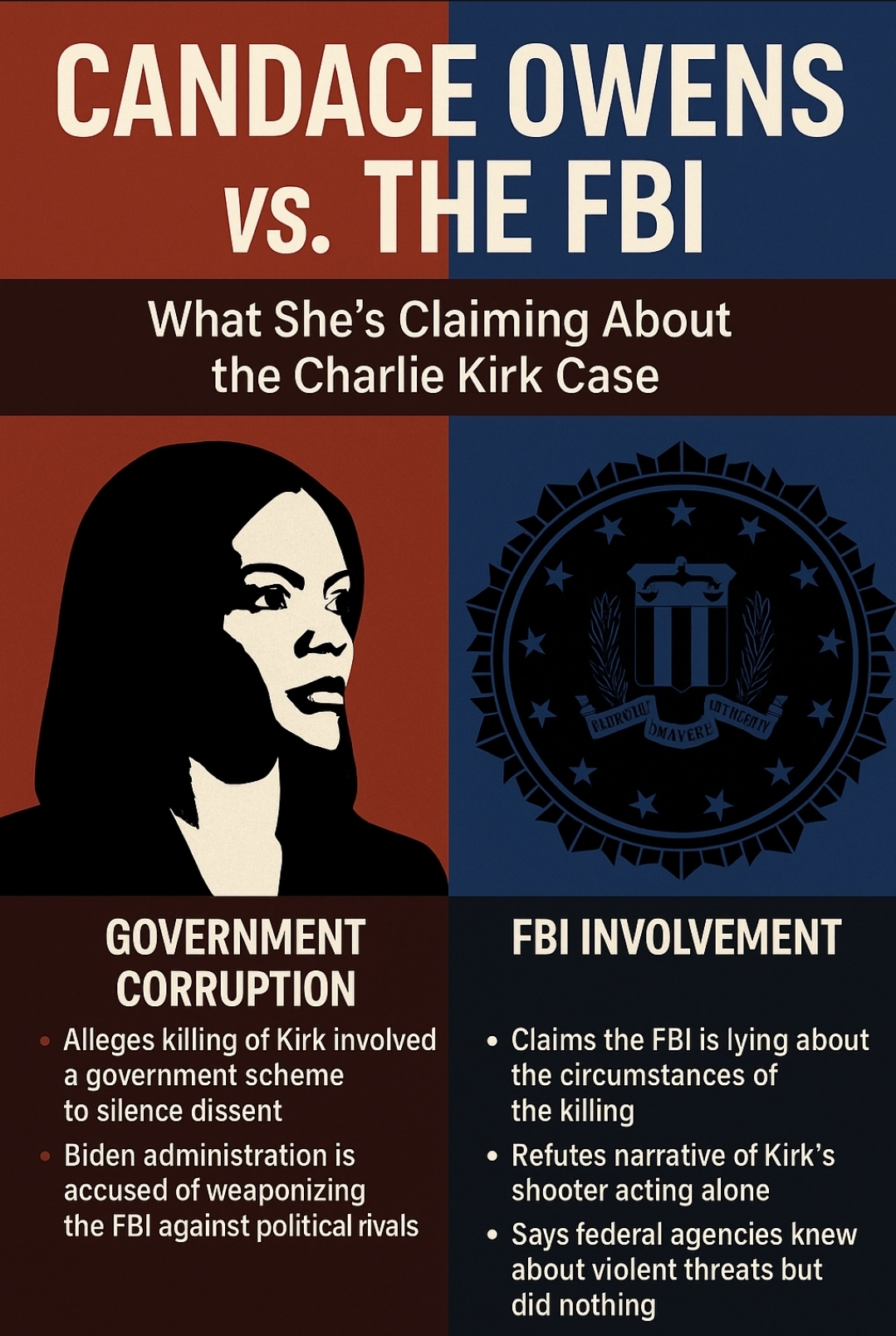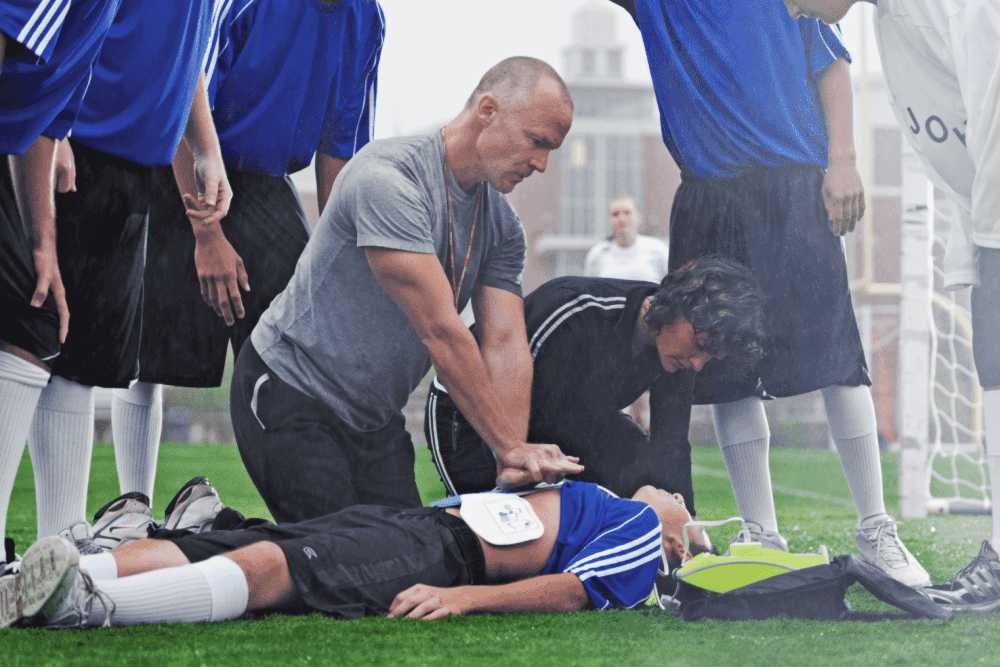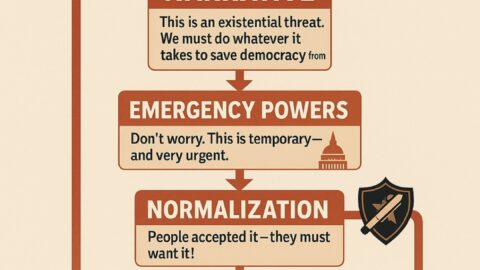When public figures like Candace Owens challenge powerful institutions such as the FBI, the issue is no longer about political sides—it’s about transparency, accountability, and trust. Owens’ claims surrounding the Charlie Kirk case strike at the heart of a larger public concern: whether government agencies are truly serving the people, or protecting themselves and their political interests. Regardless of where one stands politically, every citizen has a stake in ensuring that investigations—especially those involving public figures—are fair, open, and free from manipulation.
Becoming involved doesn’t require blind loyalty to Owens or hostility toward the FBI—it requires critical citizenship. People can begin by examining the evidence for themselves, comparing primary sources instead of relying on headlines, and demanding that both the media and government release verifiable data. Truth should not depend on which political tribe we belong to—it should depend on facts that can withstand public scrutiny.
Engagement also means refusing apathy. Write to representatives asking for oversight hearings, support independent journalists who document inconsistencies, and encourage open public debate instead of censorship. In a functioning republic, power is always supposed to answer to the people. Whether Owens’ claims prove accurate or exaggerated, the only way to preserve freedom is to insist that no agency, no matter how sacred, be above the truth.
Candace Owens’ latest commentary on the assassination of Charlie Kirk hits three themes: distrust of federal investigators, unresolved inconsistencies, and a call for radical transparency. Below is a clear, point-by-point article that maps what she argues, why it matters, and what evidence could settle each question.
1) “The investigation lacks integrity”
Claim: The FBI’s public messaging is unreliable; we’re not getting the full truth.
Why it matters: If the public can’t trust baseline facts, speculation fills the vacuum.
What would resolve it: Release of primary materials (original camera files, chain-of-custody logs, medical summary, ballistics reports) with hashes and timestamps; briefings that cite documents, not adjectives.
2) Building a minute-by-minute timeline
Claim: Owens is constructing a second-by-second account of movements (victim, security, key witnesses) immediately after the shot.
Why it matters: High-resolution timelines expose contradictions and validate/void alibis and theories.
Needed artifacts: Venue CCTV, raw phone videos with original metadata, ambulance logs, hospital intake times, and sworn statements with exact timestamps.
3) Spotlight on George Zinn’s movements
Claim: His position, escort path, and proximity to restricted areas are “suspicious.”
How to assess: Pull access logs, escort identities, video along the route, and precise timing relative to medical extraction.
Caution: Movement ≠ malice; unusual access can still be procedural. Documentation decides.
4) Possible “internal betrayal” at TPUSA
Claim: Owens suggests someone inside the organization may have acted against Kirk’s interests.
Standard of proof: Communications, directives, or actions that show intent (emails, texts, recorded instructions), plus corroborating witness testimony.
Why to be careful: These are serious allegations; they must rest on evidence, not vibes.
5) The “SD-card removal” behind the stage
Claim: A man is seen removing media cards minutes after the shooting; Owens spoke to parties with that footage but didn’t publish it.
Key issues: Chain of custody and preservation of originals (no recompression).
What resolves it: Publicly verifiable hash-checked files, a written handoff to law enforcement, and a full custodian log.
6) “No blood on the backdrop” from rear camera angle
Claim: In the back-angle video Owens viewed, she saw no back spatter; blood was visible on Kirk’s left hand.
What this does/doesn’t prove: Video compression, lighting, and angle can hide fine blood patterns; absence on one surface doesn’t fix bullet trajectory.
Needed: Original-resolution multi-angle footage, medical documentation of entry/exit, and expert reconstruction.
7) The TPUSA “Man of Steel” statement
Claim: A spokesperson cited a surgeon suggesting the bullet “should have gone through,” framing the outcome as “miraculous,” with a bullet found near the skin.
Public reaction: Invoking miracles reads like messaging to a Christian audience and sidesteps technical questions.
Better approach: Publish the medical facts (wound path, bone involvement, imaging, projectile recovery details). Let forensics speak.
8) Ballistics disputes (caliber, bullet behavior, trajectory)
Claim: Hunters and firearms instructors challenge the idea that a high-velocity round didn’t exit; others note bullet type and bone strikes can radically change outcomes.
Reality check: Practical ballistics is complex—FMJ vs. ballistic tips vs. fragmenting rounds, yaw, deflection, and intermediate targets (bone, hardware) all matter.
Deciders: Autopsy path, recovered projectile/fragments, firearm match testing, and scene photogrammetry.
9) Texts/“confession” and device forensics
Claim: The released texts look strange; Owens doesn’t accept them without underlying data.
What would settle it: Court-supervised extractions of all seized devices, carrier metadata, and message hashes disclosed in discovery (and summarized for the public without compromising the case).
10) The FBI director’s “we’re exploring all theories” post
Claim: Listing angles (shot location, accomplices, Discord logs, hand signals, transport of weapon, aircraft transponder) could be responsiveness—or optics.
What to ask for: For each listed line of inquiry, a documented disposition (“cleared,” “inconclusive,” or “active”), with the basis for that status.
11) The plane/transponder discrepancy
Claim: FBI says a data gap is rural coverage; the aircraft owner says transponder services were turned off with controller approval.
How to resolve: Release FAA/ATC logs and ADS-B data traces to show exactly when and why the signal dropped.
12) “Let the internet help” vs. investigative rigor
Claim: Owens praises “mom-sleuths” and crowd work.
Best practice: Public tips can be invaluable if funneled responsibly; core evidence (videos, devices, ballistics) must remain under strict forensic protocols to avoid contamination and misreads.
13) “You can’t trust the FBI”
Claim: Past scandals justify deep skepticism today.
Balanced stance: Demand independent verification (judicial oversight, accredited third-party labs) rather than reflexive doubt or reflexive belief.
A Short List of Documents That Would End Most Reasonable Doubt
- Original camera files (hash-verified) from every relevant camera, plus a complete chain-of-custody.
- Medical examiner packet (or authenticated summary): wound track, imaging, and description of recovered projectile(s).
- Ballistics report linking projectile(s) to the seized weapon via test-fires and lab methods.
- ATC/FAA records and ADS-B data covering the local airspace during the incident window.
- Forensic device extractions for the suspect(s): timestamps, metadata, and carrier confirmations.
- Independent reviews by accredited labs with disclosed methods and error margins.
Bottom Line
Owens is voicing the public’s core concerns: chain-of-custody gaps, contradictory statements, and premature story-shaping. Those concerns are legitimate. The fix isn’t more rhetoric—it’s evidence.
If authorities want to restore trust, they need to publish verifiable artifacts and allow independent forensic scrutiny. If commentators want to help, they should distinguish between unanswered questions and unproven accusations. The fastest route to the truth is radical documentation, not hotter takes.
Candace Owens Slams the FBI for “Misleading” Us About Charlie Kirk — A Point-by-Point Article
Candace Owens’ recent commentary on the Charlie Kirk assassination expresses deep distrust of federal investigators and raises a host of specific questions about the handling, messaging, and evidence around the case. Below I walk through the main claims in her clip, point-by-point, explain what each claim means, note what would be needed to substantiate it, and offer practical next steps for anyone who wants clarity rather than speculation.
1) “I don’t feel the investigation has much integrity… I demand the truth.”
What Candace says: She begins by articulating a blanket distrust of the FBI’s integrity and an insistence that the public be given clear answers.
What she’s getting at: A lack of transparency from law enforcement can reasonably breed suspicion — especially when the public is hungry for facts about a very public killing.
What would satisfy this claim: Timely publication of primary materials (original video files, chain-of-custody logs, autopsy summary, ballistic reports) and plain-spoken briefings from investigators with documented sources for their statements.
Why this matters: When agencies with low public trust withhold details, conspiracy narratives grow to fill the vacuum. Openness reduces that risk.
2) Candace is building a minute-by-minute timeline and following bodies
What Candace says: She’s compiling a second-by-second timeline of movements and medical transfers and is “following bodies” (tracking where people were moved after the event).
Why this matters: A high-resolution timeline can confirm or discredit competing accounts about who was where, when, and why. It can also reveal errors or inconsistencies in official statements.
How to validate: Use verified camera timestamps, verified CCTV/phone footage, ambulance logs, hospital intake times, and sworn statements with timestamps. Corroborate across independent sources.
3) Suspicion about George Zinn’s movements
What Candace says: She flagged George Zinn’s location and subsequent pathway as suspicious — implying unusual access or privileged movement after the shooting.
What this suggests: People noticed Zinn being escorted or moved in ways that raise questions about why and how he was moved.
What to check: Official security logs, who escorted him, CCTV of the route, timestamps showing when he moved relative to other key events, and any recorded statements he gave to officers.
Caveat: Movement alone is not proof of wrongdoing. It’s evidence that needs context.
4) “People within the company betrayed Charlie” — Turning Point USA
What Candace says: She believes someone inside TPUSA may have betrayed Charlie and hints at internal complicity.
What she means: She’s suggesting internal actors could have had the motive/opportunity to facilitate or conceal crucial evidence.
What would make this credible: Documentary proof (emails, text messages, video of suspicious actions, eyewitness testimony from insiders) showing individuals acted to obstruct, remove, or withhold evidence. Until then, this is an allegation that needs careful corroboration.
Why be careful: Internal tensions and politics are normal in large organizations. Allegations of betrayal should be handled with rigorous proof before being repeated publicly.
5) The “camera/SD card guy” — removal of footage
What Candace says: She reviewed footage of a man removing SD cards from cameras near the ceremony and found it suspicious; she spoke to people who had the footage but didn’t publish it.
What this means: The presence of an individual handling media near the scene is a legitimate chain-of-custody question. If original footage was removed and not preserved or shared, that’s a huge deal for the investigation.
What needs to happen: Publish (or make a court-verified copy available to independent labs) of the original, uncompressed camera files; provide a formal chain-of-custody log showing who physically handled each device and when. If cards were removed for security and given to law enforcement, document that handoff.
Why it’s crucial: Forensic video analysis depends on original files — compression, re-encoding, or missing segments can dramatically change what analyses show.
6) “I didn’t see any blood” — Candace’s viewing of back-camera footage
What Candace says: She viewed footage from behind Charlie and said she did not observe blood on the backdrop, only blood on Charlie’s left hand.
Why this matters: People use blood patterns and timing of blood flow to infer wound location and direction of fire. A claim there was no visible back spatter has motivated alternative theories about shot angle.
What to verify: Original, timestamped video from multiple camera angles; high-resolution still frames; and hospital/forensic documentation about visible wounds and bleeding when Charlie was removed from the scene.
Important nuance: Absence of visible blood on a backdrop in one clip does not settle wound trajectory. Lighting, camera resolution, compression, angle, and blood dispersal physics all influence what appears on video.
7) The “Man of Steel” narrative from the TPUSA spokesperson (Andrew Kovett)
What was said: TPUSA’s PR statement referenced a surgeon’s remark that the bullet “should have gone through” and that locating a bullet “beneath the skin” was a miracle — i.e., a “man of steel” framing.
Why some find it problematic: On its face, such language looks like an appeal to faith and miracle, which can be unsatisfying (and suspicious) to audiences who want scientific explanation. It risks deflecting technical questions with religious or rhetorical framing.
What investigators should do instead: Provide the medical facts (wound description, bullet fragments recovered, imaging results) and let forensic experts explain.
8) Ballistics & weapon questions — caliber, trajectory, and how a bullet behaved
What’s being argued publicly: Observers — including hunters and firearm instructors — point out that certain calibers (e.g., .30-06 / .30-30 / 300-series) typically produce through-and-through wounds in soft tissue; not all rounds behave identically, and bullet type (full metal jacket, hollow point, fragmentation rounds) plus intermediate impacts (bone) change outcomes.
What’s needed to settle it: The definitive evidence is (a) the recovered bullet or fragments, (b) ballistic testing linking the projectile to the suspect weapon, (c) a forensic pathologist’s autopsy report showing wound path and damaged tissues, and (d) scene photogrammetry showing relative heights/angles.
Why caution is warranted: Online experts vary widely. Practical ballistics is complex; lay comparisons (e.g., “hunters shot hogs at X yards”) are helpful anecdote but not a substitute for the medical and lab work.
9) Tyler Robinson’s texts, alleged confession, and the “miracle” framing
What Candace notes: The textual evidence released by authorities (the defendant’s texts) looked odd to her; she didn’t accept the narrative without seeing the underlying data.
Why this matters: Text messages can be forged, altered, or taken out of context — especially when screenshots circulate. The defense and independent labs can examine originals; if texts are crucial, investigators must provide metadata chains (timestamps, carrier logs, device backups) to verify them.
What will resolve it: Forensic extraction of the suspect’s device(s) under court-supervised discovery — and publication (or authenticated summaries) of relevant message metadata.
10) FBI Director’s public statement (Cash Patel) — listing many theories to be examined
What the director said: The agency publicly listed theories it was investigating (angle, accomplices, flight transponder questions, Discord/text evidence, etc.) and said not all materials can be released now.
How to interpret this: Publicly listing lines of inquiry can be read two ways: (a) as evidence the FBI is responsive to internet sleuthing and is taking leads seriously, or (b) as an attempt to manage optics and preempt online narratives. Both interpretations are plausible.
What to press for: If the FBI truly investigated specific items (e.g., transponder data, accomplice leads), the public should at least be told which items were cleared and on what basis — not every detail, but a clear outcome and rationale for major claims.
11) The plane/transponder inconsistency
What’s in dispute: The FBI said a plane’s transponder gap was explained by incomplete rural flight data; the plane owner said the transponder was turned off with ATC permission.
Why it matters: If a plane turned off a transponder near the site, that could explain certain radar anomalies or feed into alternative hypotheses. Conversely, loss of radar coverage in rural areas is common and innocent.
What to demand: FAA logs, ATC transcripts, and the plane’s ADS-B/flight data that show exactly when and why the transponder stopped reporting. Those records are routinely auditable.
12) “Let the ‘mommy sleuths’ take over” — crowd investigation vs. official process
What Candace argues: She invites internet sleuthing and public tips but also calls for authorities to be transparent.
The tension: Crowd analysis can surface leads rapidly — but it can also amplify errors, piracy of evidence, doxxing, and false accusations. Official investigative procedures exist because evidence handling, chain-of-custody, and expert interpretation matter.
Best approach: Crowd-sourced tips can be a positive force if they are funneled responsibly to investigators and paired with safeguards against harassment and misinformation.
13) Final point — “We can’t trust the FBI”
What Candace cites: Historical instances (COINTELPRO, Waco, Epstein suspicions) to justify broad skepticism.
What to acknowledge: Institutions have made mistakes, and past misconduct justifies public demand for accountability. That said, blanket dismissal of institutional work before seeing case evidence can also be used to inoculate false narratives from scrutiny.
A balanced stance: Demand independent verification and oversight (judicial reviews, independent forensic labs, judicially supervised discovery) rather than reflexive acceptance or rejection.
Practical, evidence-based checklist of what must be produced to end reasonable suspicion
- Original footage: All original, uncompressed camera files from every camera at the venue, with hash verification and a documented chain of custody.
- Autopsy packet: A medical examiner report (or an authenticated summary) — wound track, bullet recovery details, and imaging.
- Ballistics report: Test-firing of the recovered weapon (if recovered) vs. recovered projectile(s)/fragments, including laboratory reports.
- Chain-of-custody logs: Who handled each device and card, when, and under whose authority.
- ATC/flight records: Complete FAA and radar/ADS-B logs for nearby flights on the timeline in question.
- Forensic device extractions: Verified extractions of suspect device(s) and metadata for texts/Discord chats, available in discovery to defense counsel.
- Independent review: Where possible, allow independent, accredited forensic labs and third-party experts to review key items and publish methods/margins of error.
Final note: Demand facts, avoid prejudice
Candace’s clip channels genuine public frustration — particularly around transparency, chain-of-custody, and confusing messaging. Those are valid concerns to raise loudly. But it’s also critical to separate legitimate investigative questions from harmful generalizations or collective blame. Fact-based transparency and independent forensic review are the only ways to resolve doubts without fueling misinformation or targeting entire groups.







